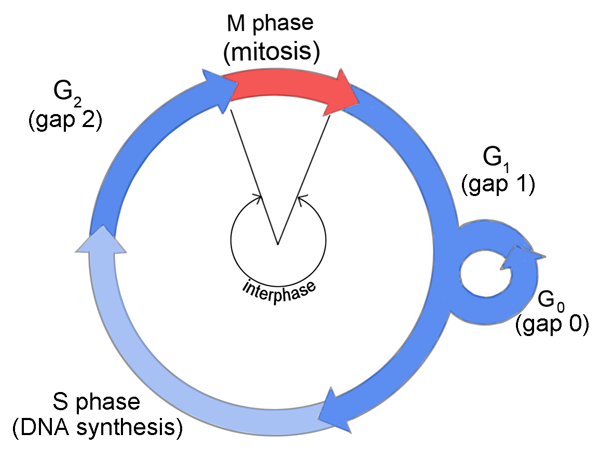
Before cell division can occur, the genetic information, which is stored in DNA in chromosomes, must be replicated. Much of the cell’s infrastructure is devoted to keeping genetic information identical between replications and across generations.
The primary purpose of cell division is to replicate each parent cell (by dividing into two cells) while maintaining the original cell's genome. The cell cycle can be separated into two major phases that alternate with each other: interphase, during which the cell grows, prepares for mitosis and duplicates its DNA, and the mitotic (M) phase, in which the cell divides into two genetically identical daughter cells (see figure below).

Interphase is divided into three phases: G1, S, and G2. The subsequent mitotic (M) phase consists of two processes: mitosis, the process of nuclear division, and cytokinesis, division of the cell's cytoplasm. Each mitotic phase results in the formation of two cells that are genetically identical to the parent. The activation of each phase is dependent on completion of the previous phase. Some cells divide continuously, while others can exit the active cell cycle temporarily or indefinitely by entering G0 phase, where they stop dividing.